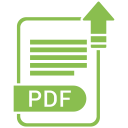Investigation of inhibition efficiency of Punica granatum peel extract against bacteria
Alaa Abdul-Hussein Al-Daamya, Ula Bahaaa, Dhuha Alaaddina, Marwa Hassana
Objectives: The present study aims to determine the inhibitory efficiency of Punica granatum peel extract and test its effectiveness against pathogenic bacteria.
Methods: Acetone, ethanol, methanol, ethyl acetate and distilled water were used as solvent to obtain of crude extract of P. granatum peel, which tested to determine the effectiveness against five types of pathogens, such as Pseudomonas aeruginosa, Pseudomonas oryzihabitans, Proteus vulgaris, Klebsiella pneumonia and Staphylococcus aureus under a series of concentrations. It was also used to determine the most efficient concentration of solvent optimization, and then was determined minimum inhibitory concentration (MIC) of the extract more efficient.
Results The results of the current study showed that the most efficient extraction solvent is ethyl acetate showed the diameters of inhibition zone are 48.66, 51.5, 41.66, 28.0, and 40.83 mm for the types of bacteria above, respectively. The results: showed that the concentration of ethyl acetate was 40% in the optimal inhibition of bacteria, amounting to diameters of inhibition zone at the concentration of 19.83, 27.33, 17.66,15.16 and 12.33 mm for each of the bacterial species above, respectively. The results also found that MIC is 11 mg/ml of P. aeruginosa and 10 mg/ml of P. varaplis and 9 mg/ml of P. oryzihabitans and 3 mg/ml of K. pneumoniae and S. aureus.
Conclusion: The most effective composites against pathogenic bacteria from P. granatum peel are using ethyl acetate solvent with the concentration of 40%.




























































